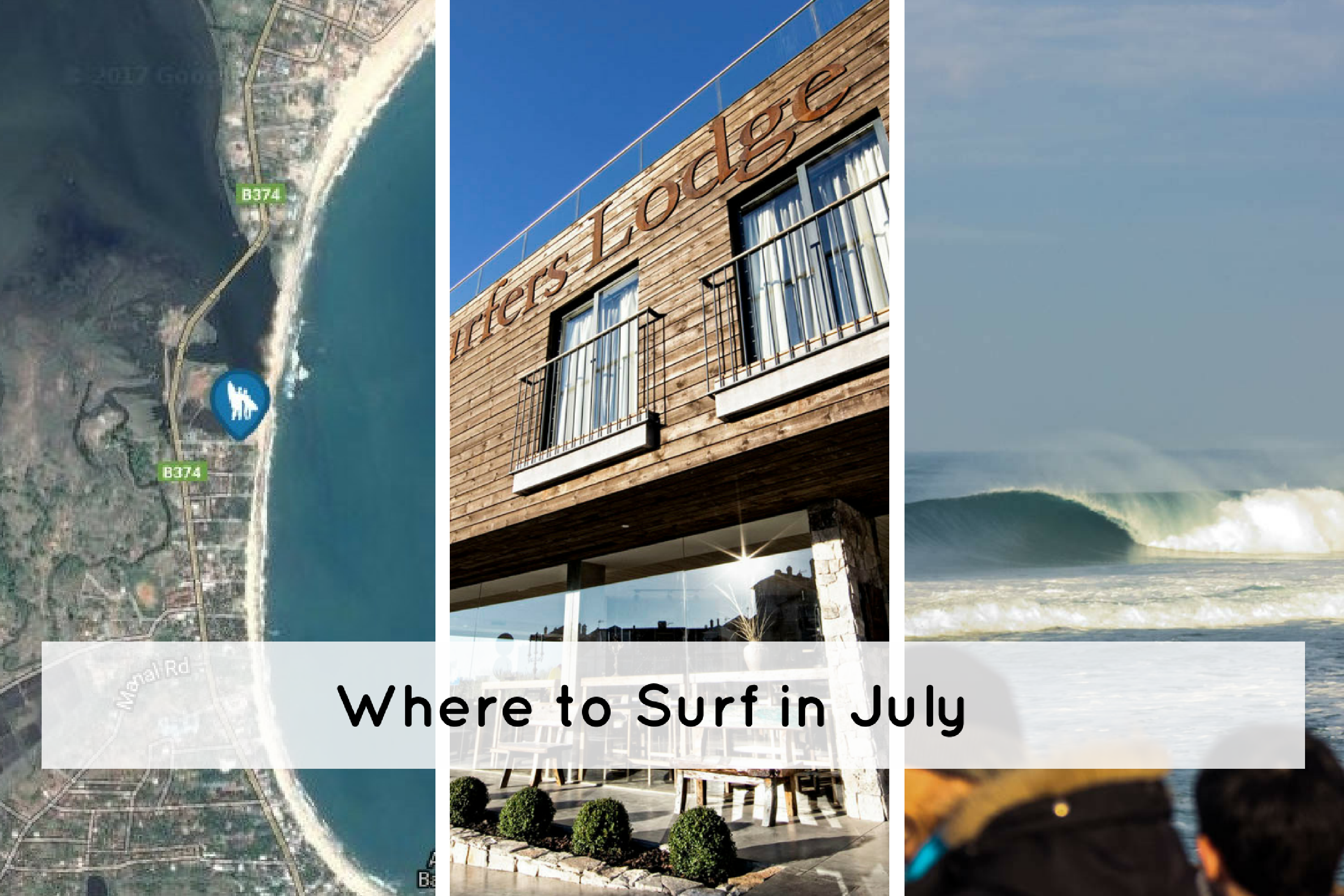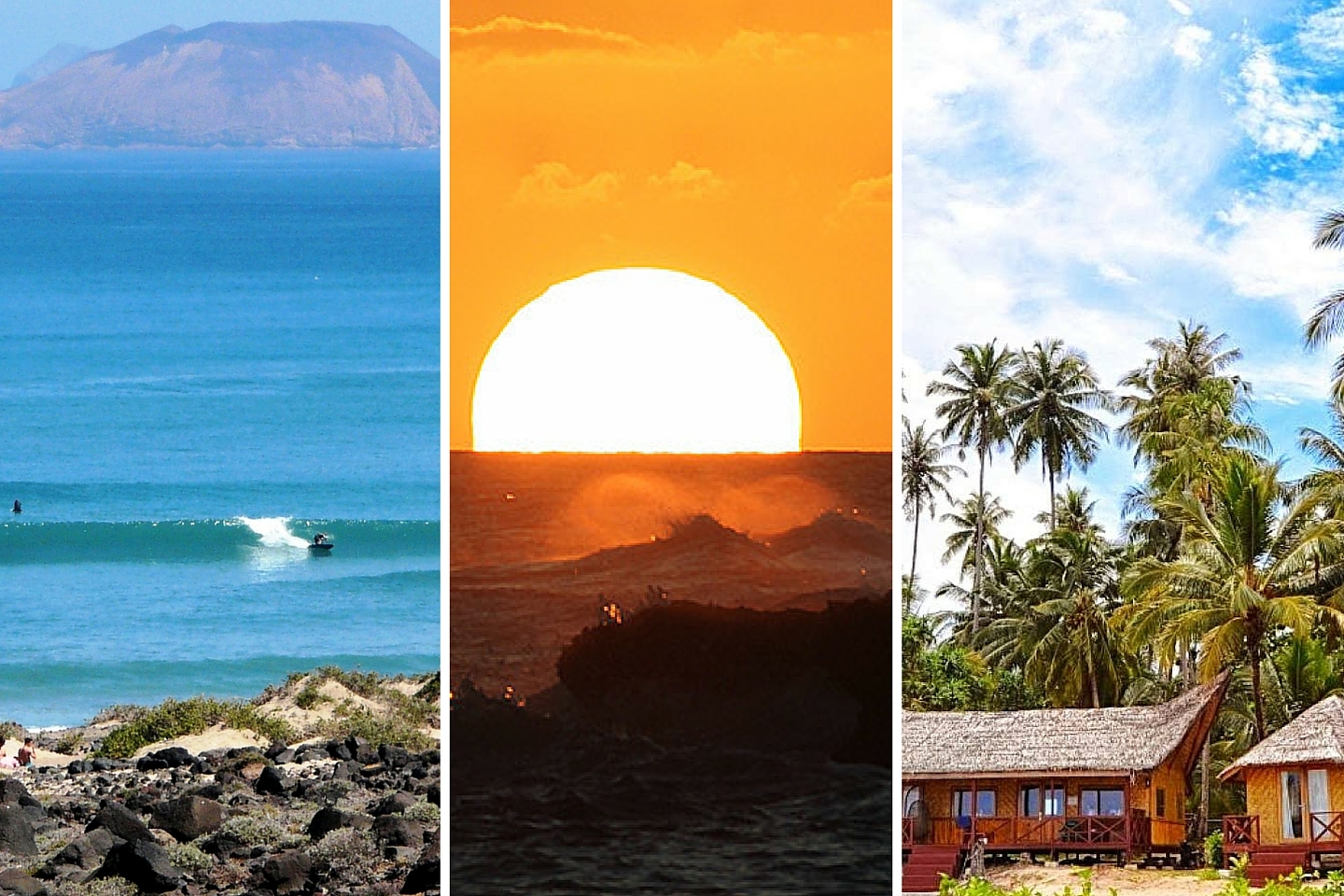The New Wave, by Rick Le Vert
Determined to rid himself of the surfing equivalent of L Plates, an Orange Jersey – Rick Le Vert finds his groove while teetering on a board in the charming Portuguese resort of Ericeira
Determined to rid himself of the surfing equivalent of L Plates, an Orange Jersey – Rick Le Vert finds his groove while teetering on a board in the charming Portuguese resort of Ericeira
In the overly style – conscious world of surfing, wearing a bright orange jersey over your wetsuit is more than just naff, it's the ultimate signal that you are not yet – and may never become – a member of the surfing community. Nevertheless, Alex calmly insisted we put the jerseys on.
Everything about our ex-pat Austrian surf instructor said “made for waves”. Like a creature from the deep in mid-moult, he wore his wetsuit casually peeled down to the waist to reveal a sculpted swimmer's physique and a tattoo of Neptune on one shoulder. A wool cap snugly held his long blond hair in place, and a pair of buy-eye sunglasses sat above a gleaming smile that flashed like a Cheshire-cat grin from the tanned backdrop of his face.
With the jerseys, he reasonably explained, “I see you better in the waves”. Yes, my suspicious mind thought, so too can the real surfers out there, for whom orange means: “Warning, learner drivers not in the control of their vehicles. Keep well clear and watch for flying boards.” Now, three days isn't a lot of time to earn your surfing chops, but that's all we had. Three days on the beaches of Ericeira, the heartland of Portuguese surfing, to shed these cursed orange jerseys.
Hugging the arid hillsides and small cliffs along a stretch of Atlantic coast just to the northwest of Lisbon, Ericeira was once a tiny and rustic fishing village. While brightly painted wooden boats still decorate the little harbor at the base of the some of those cliffs, holidaymakers long ago replaced the local fisherman as the area's economic lifeblood. And yet, in Ericeira tourism has a distinctly local flavor.
Families from Lisbon flock to the newer apartments and summer homes that surround an intact old town of white cobbled streets, small tree-lined squares and multi-coloured traditional houses. The buoyant nightspots are discretely tucked in amongst simple café's, cosy seafood restaurants and small shops selling everything from stationery supplies to the inflatable beach toys found in seaside towns the world over.
On a given morning the town bustles with locals shopping and chatting, enjoying the proximity to the sea and soaking up the sun over breakfast. Mingling amongst them you'll see the odd handfuls of surfers, early birds shaking off the excesses of the previous night before going in search of the day's first watery worm.
Back on the beach at Foz do Lizandro, Alex had us gather around him. “The first rule of surfing”, he told us, “is to protect your head when you fall. When a board is attached to your leg by a leash, it can have a very bad habit of coming back to whack you on the head. “The second rule: never use your knees to stand up. It has to be one fluid movement, a quick leap that takes you from lying down to squatting on the board. If you use your knees, pay very close attention to the first rule. Then came the absolute golden rule of surfing. As beginners and non-locals, Alex told us, we're the dregs of surfing society, “so keep out of everybody else's way”.
Evidence of Ericeira's special standing in Portuguese and world surf culture can be seen in the ugly tubular-wave-and-surfer fountain decorating a roundabout at the edge of town. As far back as the mid-1970s, travelling surfers from Australia, England, France and Spain joined the locals to surf the beach breaks at Ribeira D'ilhas and Foz do Lizandro, the reef breaks at Pedra Branca and Backdoor, or the legendary point break at Coxos. With no less than 13 top quality breaks offering unparalleled surf variety, one of them is bound to be working – as they say in the lingo – no matter what the sea and weather conditions.
Ericeira's surf scene has come a long way since Portugal's first surfing championships were held at Ribeira D'ilhas back in 1977 and the town threw a post-competition party in the local park, serving a contingent of scraggly surfers a feast of great seafood and good local wine. One story has the event ending in an alcohol-fuelled, chocolate-mousse-inspired mass food fight. Nowadays, the world-class surfers and fans attending the annual pro-tour event at Ribeira D'ilhas are more likely to be entertained by bands such as Foo Fighters then by flinging dessert at each other.
Alex dispatched us into the white water near the shore, the foamy leftovers from the young guns further out, carving up the faces of the green water waves on boards the size of tea trays. But even in the comparative calm of the rushing foam, a stabilizer-equipped board, something akin to a Polynesian outrigger, wouldn't have gone amiss. Despite Alex's shouts of “paddle faster, no, too early, wait on the wave, that's it, now go, go, go and up”, we just kept flopping into the powerful pull of the water.
Somehow, after 30 minutes of wallowing, I inexplicably leapt to my feet and stayed there until the wave fizzled into nothingness. Granted, it was mere seconds, but I'd done it, I'd surfed – Alex's thumbs-up look of approval confirmed it. After another 30 minutes of trying to repeat my feat, my arms were like limp noodles, my lower back was seizing up and I had gallons of seawater slowing back and forth in my head. As we left the water, one woman in my group gave me an exhausted and said “my God, that just puts Pilates to shame”.
Surfing, I've been told, is the world's most powerful legal drug. Stories abound of people who catch the buzz never to escape its grip again: lawyers and accountants who flush careers down the toilet while they go in search of the perfect wave; husbands and wives who abandon their spouses for an illicit affair with the water; parents who turn their children into neglected surf orphans. I've even heard a story of an 80 year old, an aged veteran of the waves, who promised his wife he'd give it up before he caught one too many. He even sold all his beloved boards. But that didn't stop him from showing up at his favourite breaks and cadging a board from old surf buddies, like a guy who tells his wife he stopped smoking only to bum cigarettes on the sly off his still-smoking friends.
Flushed with the thrill of a minor success in the white water, I arrived back for day two at Foz eager for a go at the green water. “Forget it”, Alex said, “there's no surf today”. The wave frequency was too short and confused, and a fierce offshore wind was knocking the stuffing out of what little power the swell had. I looked out at the water to see a line of hopeful surfers gently bobbing up and down like corks lost at sea.
Waiting on the waves-it's the flipside to surfing, even in Ericeira, where the wait is generally a short one. But let's face it, I can think of worse places than this stretch of sunny coastline to find myself with little to do. A small hop over the peninsula and you're in Lisbon, the city currently lighting up the international grapevine as Europe's emerging cultural hotspot. And just down the road from here is Sintra – an exotic dream world of royal palaces, bougainvillea, eucalyptus trees, wrought-iron balconies and romantic hillside villas. Lord Byron famously called it “glorious Eden”; UNESCO calls it a World Heritage Site.
Fine time-killers for some, maybe, but with only one day left to rid myself of a naff orange jersey, I opted to keep focused on the task at hand. One way to do this is with a yoga session on the beach at Foz. I chose to go for a deep sport massage followed by some intensive study of surfing videos. Admittedly, for the novice surfer these continuous clips of surf studs effortlessly pulling off tremendous stunts, 360 degree aerials, and last second escapes from the collapsing barrel of high waves amount to little more than surf obsessiveness- the unattainable promise of the ultimate wave-riding experience-but there could be a move in there worth remembering.
I rounded off my wave-rider prep with a visit to an anonymous industrial shed on the edge of town, for a peak at the art, science and subculture of surfing. This is the home of Boardculture, one of two surfboard manufactures in the area. I watched as Picos, the master shaper, quietly sanded foam blanks in a windowless room. A bulky mask and filter protected him from the lethal polystyrene dust hanging in the air. In the next room, another masked craftsman meticulously applied coat after coat of resin to six boards on drying stands, adding layers of strength to the lightness of the foam core. They appeared to hover in the room, brilliantly glistening like flawless works of art waiting for a wave.
Day three at Foz, the waves were back and we got the nod to head for the green water. Somehow I thought, “I can do this, I've got that leap down”. But neither the massage nor my absorption of surfing culture taught me about timing. Bruised and beaten, I left Foz with my orange-jersey status still intact. I've also left with an incredible urge to give it another go. Hope I'm not hooked.
Surf's UP:
The consistent swells of winter and spring make these the best seasons to surf in Portugal, especially in Ericeira where the temperate climate and dry conditions take some of the sting out of winter's surfing.
Surf Holiday Portugal can be booked through surfholidays.com who offer surf instruction and several options for accommodation in the area.




 Francesca Bingley
Francesca Bingley






